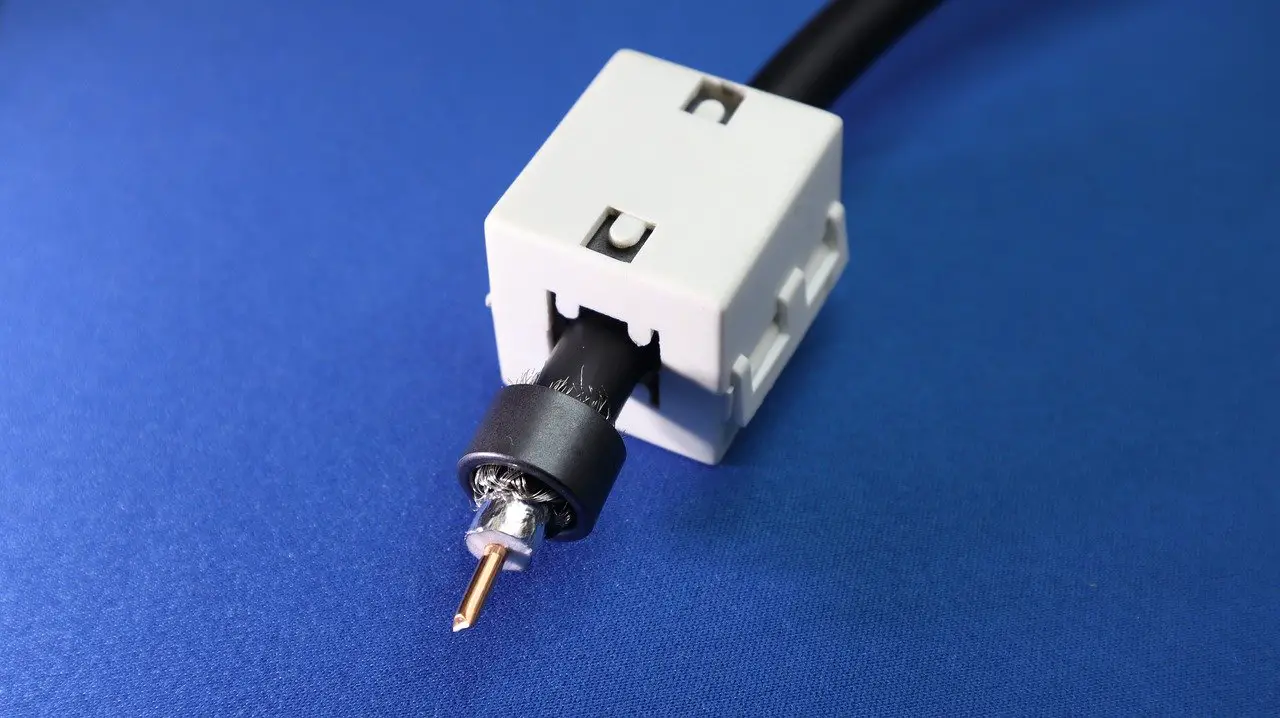
*As an Amazon Associate we may earn from qualifying purchases when you buy through links on our site.
It would be impossible to talk about a coaxial cable adapter without first discussing the vital role that cable connectors play in the entire set up.
By “connectors” I mean F-connectors (shown below), which are those metal tips on the ends of coax cables. They could also be the metal ports on equipment like on the back panel of your TV, allowing you to attach the cable.
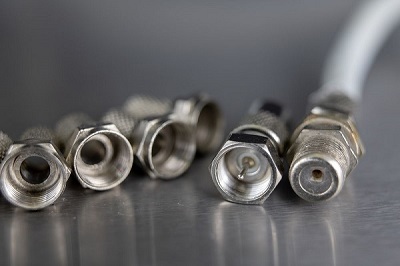
Thanks to cables and their connectors, you can have a seamless flow of over-the-air TV programming from your antenna to all the TVs in your house.
So connectors will be the starting point of this guide to better understand how to properly use coaxial cable adapters.
Without further ado, let’s jump right in.
Components of a Coaxial Cable
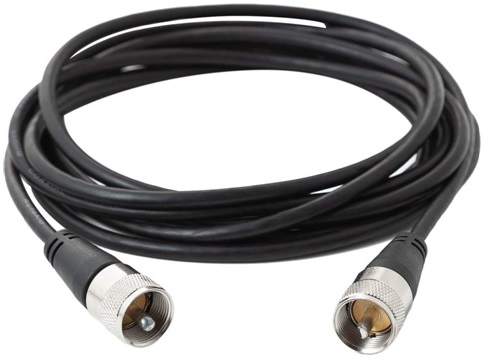
Coaxial cables have one job – signal transmission. They have to do this while ensuring that the potential loss of energy is kept to an absolute minimum.
The keyword here is minimum since some level of signal loss is expected. The level to which this occurs depends on three critical components:
1. Length of the Cable
No cable has perfect insulation – that’s a fact. So, the longer the coaxial cable is, the further the signal has to travel.
This also means that more energy gets lost along the way as the signal travels further out from its origin. In an ideal situation, a longer cable needs to have an appropriate level of insulation and insulating layers to counter this loss.
2. The Insulation Rating
This is a measure of how thick the insulation of a particular coaxial cable is. Most of the UHF coax cables you’ll come across typically are the 195, 240, and 400 series. You would expect a higher rating to be better, since this means that the cable in question has better insulation, right?
This is true, to some extent. While a thicker cable means that you minimize the amount of signal energy lost, it also means that you have to contend with having a heavy, less pliable cable to work with.
This can be a problem when trying to position it in tight spaces that call for more flexible wires. You just have to figure out what you’re willing to trade off for performance.
3. Cable Connectors
A coax cable wouldn’t be complete if it didn’t have F-connectors at both ends of it. And the type of F-connector you need will depend on the matching port of the destination device like your TV, cable box, satellite receiver, etc.
BTW, the ones below on the back panel of a set-top box are compatible with RG6 or RG59 coaxial cables.
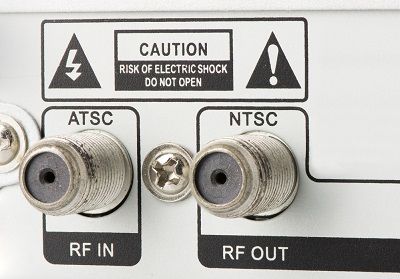
What Is a Coaxial Cable Adapter and How Does It Work
If you have any type of hardware that doesn’t work with a particular electronic device, you can use an adapter as a bridge between the two. In other words, it’s the component that allows two different devices that would otherwise be incompatible to “communicate.”
For example, one kind of adapter is a digital-to-analog TV converter box, which allows you to enjoy today’s OTA TV signals on an older, analog TV.
Another, though much simpler, kind of adapter is a coaxial cable adapter, which joins any two coaxial connectors that would otherwise be incompatible.
So when would you need one? Well, mainly when you notice perhaps your coaxial cable won’t fit into the port of your TV or set-top box. It might be easier and cheaper to just buy a special adapter that connects the end of your coaxial to your device port.
Coaxial Connector Connection Rules
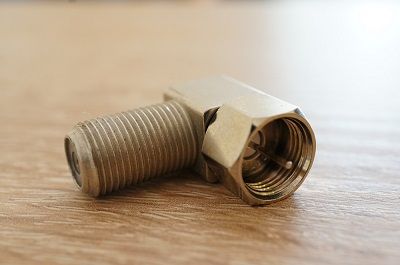
It’s sometimes difficult to ascertain whether two connectors will join properly and work as they should. Here are a few rules to make the process simple and to better understand when you would need a coaxial cable adapter.
- Rule 1: Similar connector types will connect – For instance, BNC connects to BNC. TNC connects to TNC.
- Rule 2: Similar connector polarities will connect – For instance, TNC-RP (Reverse Polarity) connects to another TNC-RP.
- Rule 3: Opposite threading types or genders connect – For instance, SMA male connects to SMA female. TNC-RP male connects to TNC-RP female.
Here’s a short illustration to drive this point home:
Suppose your digital device has a European PAL female connector, whereas the already-terminated coaxial cable has an F-type male connector. The two will not connect without some sort of “third-party” help.
You would need an F-type female-to-PAL male adapter for the two components to work together.
Types of Coaxial Cable Adapters
Here’s a list of the most common types of coaxial cable adapters you’ll find on the market:
- 50 Ohm BNC Male – 75 Ohm BNC Female
- BNC Female – BNC Female
- BNC Male – BNC Male
- F-Female – PAL Male
- F-Female – RCA Male
- SMA Female – BNC Female
- SMA Female – TNC Female
- SMA Male – BNC Male
- SMA Male – FME Male
- SMA Male – TNC Female
- SMA Male – TNC Male
- TNC Male – TNC Male
- UHF Female – UHF Female
- UHF Female–Male–Female
- UHF Male – BNC Female
Choosing a Coaxial Cable Adapter
When choosing an adapter, you need to ensure that you select one that’s the right size for the specific connectors you’re using. If the adapter is too small, the connector won’t fit. If it’s too big, the connector won’t secure properly and will most likely fall off.
Keep in mind as well that the type of adapter you need is determined in large part by the equipment used with the coax cable.
A particular cable type can support a host of different connector types. But, not every connector type can be used with different cable types.
You can, therefore, see why using the right kind of adapter bridges this gap.
A Simple Solution to a Complex Problem
Using a coaxial cable adapter is an easy and cost-effective way to change the connector-type of an already terminated cable or incompatible device connector.
Pick an adapter that’s most suited to your domestic, satellite, or terrestrial signal installation needs. That’s the only way to solve your coax-cable-connector incompatibility problems.
